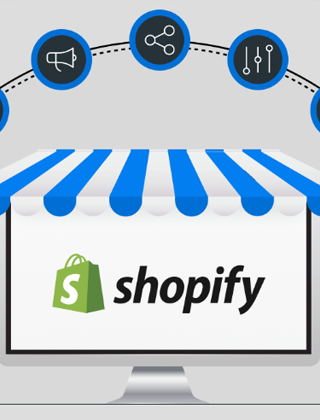How to Optimize Your Shopify Store to Increase Conversions
Optimizing your Shopify store is essential for improving the overall shopping experience and driving conversions. By simplifying product categories, streamlining the checkout process, and making navigation intuitive, you can help customers find what they need quickly and efficiently. A clear and well-organized store encourages customers to complete their purchases without frustration.
Simplifying the layout and reducing unnecessary steps in the buyer journey can lead to higher conversion rates, as customers are less likely to abandon their carts.


Understanding User Feedback
Gathering and analyzing customer feedback is critical to optimizing your Shopify store. By paying attention to customer reviews, monitoring site analytics, and examining heatmaps, you can uncover issues that are preventing users from converting. Whether it's slow page load times, difficult navigation, or a complex checkout process, user feedback will guide you in identifying problem areas.
Continuously testing and making data-driven changes based on this feedback allows you to enhance the shopping experience, making it more likely that visitors will convert into paying customers.
-
Sketching the Ideal Store Layout
Before implementing any changes, it's a good idea to sketch out potential layouts for your store. Wireframes and mockups help you explore different designs and approaches, giving you a clear idea of how customers will navigate your site. Consider how product pages, categories, and the cart should flow, and ensure that key elements like product filters and call-to-actions are prominently placed.
-
Design Execution
Once you've finalized your layout, it's time to bring your design to life. This is where you refine the visual and functional aspects of your store, focusing on elements like color schemes, fonts, and imagery that align with your brand. An optimized design enhances the user experience, ensuring that the site looks professional and easy to navigate, ultimately encouraging users to complete their purchases. An effective design not only looks good but also helps customers feel confident in their decision to buy from your store.
-
Development and Implementation
After the design is ready, the development phase ensures that your store is fully functional. Developers play a crucial role in making sure your site runs smoothly on all devices, particularly mobile, as more users are shopping from smartphones. Additionally, incorporating SEO best practices during development helps improve your store’s visibility in search engines, driving more traffic and potential conversions. A well-developed Shopify store provides a seamless user experience that keeps customers coming back for more.
By focusing on simplifying your store layout, leveraging customer feedback, and carefully executing your design, you can create a Shopify store that not only attracts visitors but also converts them into loyal customers. Optimizing the entire shopping experience—from browsing to checkout—will help you increase your conversions and grow your business.






Michael Harris
Digital Marketing ConsultantGreat read! I always tell my clients how important user feedback is. Understanding where customers struggle and improving those areas, especially the checkout process, has consistently led to better conversion rates for the stores I’ve worked on
John Peterson
E-commerce SpecialistReally useful advice! I’ve been running a Shopify store for a few years, and simplifying the user experience has made a huge difference in my sales. Focusing on a clean design and easy navigation helped me boost conversions almost immediately.
Brian Mitchell
Small Business OwnerI recently applied some of these suggestions to my Shopify store, and the results have been amazing. Focusing on mobile optimization and simplifying the overall layout really paid off. Thanks for the practical tips!